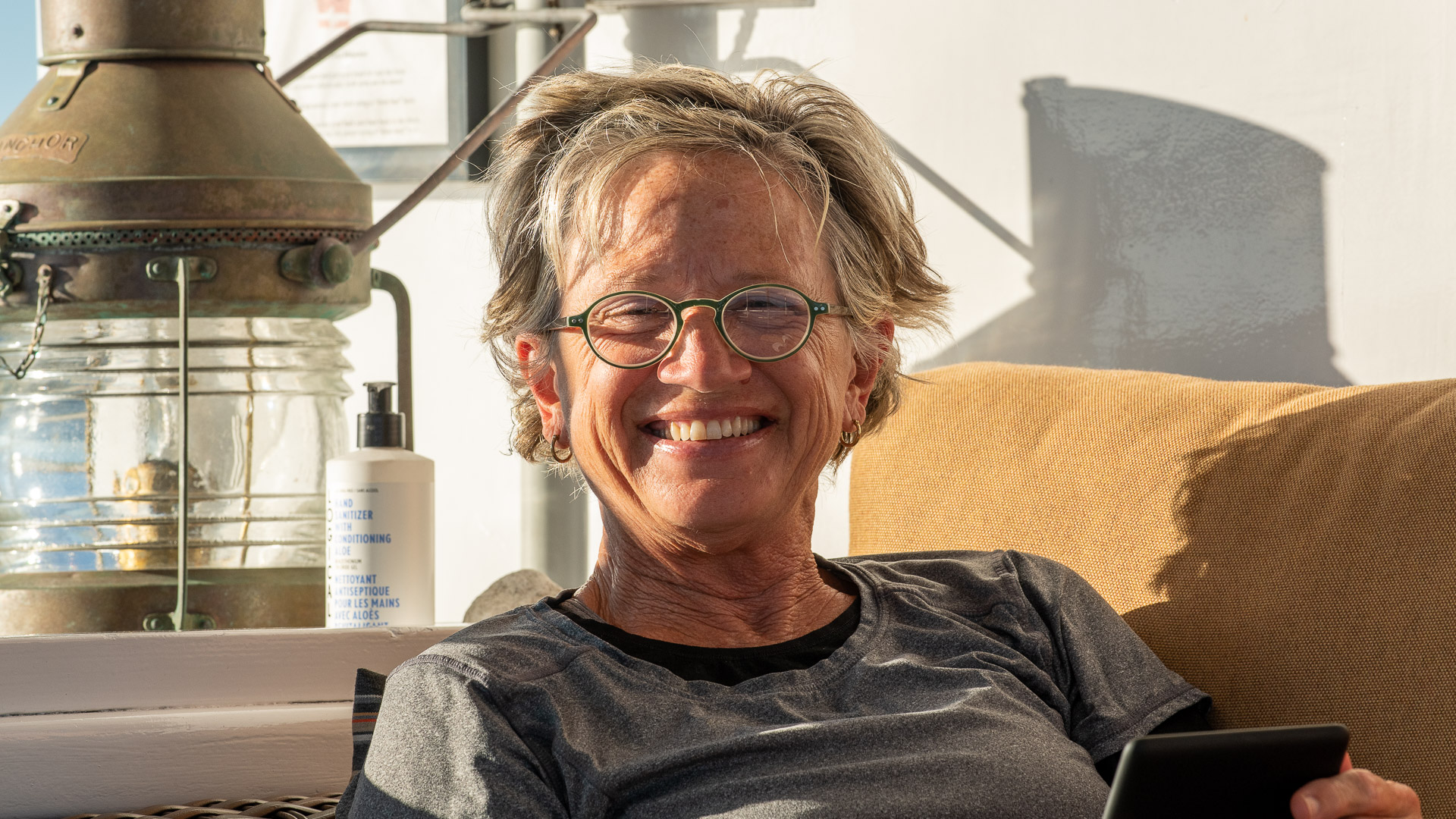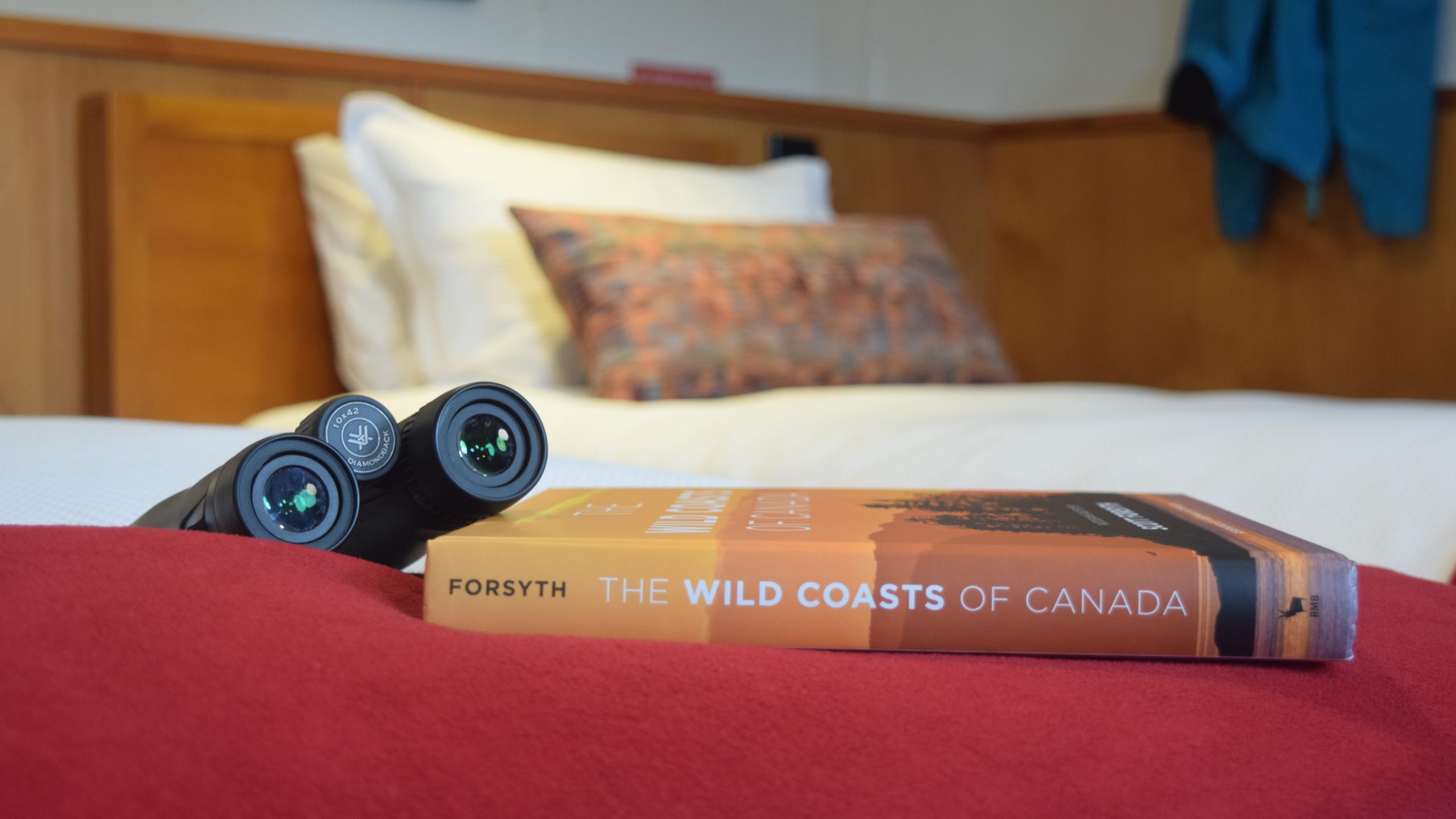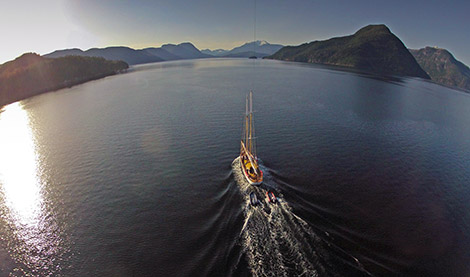When it comes to planning a dream expedition, the world really is your oyster. But can there ever be such a thing as too much choice?
You have spent days, weeks or perhaps even months mulling over where to go, the best time of year and which operator (thank you, if we’ve made it this far).
Now you are ready to book and posed with the difficult decision of which cabin to pick. Whether it’s your first time at sea or you’re a seasoned cruiser, you would be forgiven for not understanding the cost-opportunity of each cabin at a glance.
If you have travelled on cruises like some of our guests, you’ll understand this process can be especially challenging because of all the categories that big ships offer. On your typical large cruise ship, there’s Inside, Outside, Balcony, Suite and a bewildering array of other cabin subcategories.
Aboard Cascadia and Swell, there are only three options: Category 3, Category 2 and Category 1. For the purposes of this guide, we will be focusing predominantly on Cascadia, though many of the same principles can be applied to Swell, too.
This article also assumes that you have familiarised yourself with Cascadia’s deck plan and come with a basic understanding of cabin locations, dimensions and bed configurations.
Before we go into the differences
It’s worth covering the similarities. First off, all guests receive the same amenities, dining and itinerary activities regardless of cabin. No matter where you choose to hang your hat, you will enjoy the same experiences, from incredible wildlife viewing with A-list naturalists to the exquisite on-board culinary service.
All of Swell and Cascadia’s cabins are also considered outside cabins by cruise standard; even our Category 1 cabins feature charming oceanview portholes. Cabins come climate-controlled and have their own en-suite bathrooms as standard, stocked with eco-friendly shampoo, soap and fresh towels.
Finally, all of Cascadia’s cabins offer ample room for guests and are regularly tidied while out on excursions, meaning space is never really an issue. Most cabins can be configured as a queen or two singles depending on your sleep preferences, too.
Fun fact: Category 1 cabins aboard Cascadia are more spacious than Swell’s Category 3 cabins. Though as a living piece of history, Swell’s cabins more than make up for their size in charm.
Choosing “real estate” on board
On Cascadia, each category corresponds roughly with where the cabin is situated on the vessel: the bridge deck for Category 3, main deck for Category 2 and Campania, and lower deck for the remaining Category 1 cabins.
With cruise ships, you may consider cabins near to particular areas of the ship as more desirable. Cascadia is more like a yacht, with few people aboard, meaning all of her decks and amenities are easily accessible no matter where you are on the ship.
It’s true a cabin on a bridge deck provides more desirable views, so you might consider a Category 3 for this reason.

Speaking of views, if you’re wondering whether there’s a better side of the ship for viewing landmarks or wildlife, you wouldn’t be the first. The answer is: no, it does not matter.
While a river cruise from Budapest to Vienna will offer the same starboard views on every voyage – we move between islands, down fjords and into bays, where there is natural beauty all around us, changing all the time. At anchor, the ship turns with the tide.
Seasickness is also a nonfactor when choosing your cabin. Our voyages take place across 1,500 kilometres of protected waterways, meaning even those sensitive to motion sickness rarely have to worry on our trips, no matter where they are on the ship.
Are you more escape or immersion?
While some treat a cabin like an escape from life on deck, others prefer not to escape at all – soaking up every opportunity to converse about coastal history, connect with Indigenous culture or be the first to spot a breaching humpback on the horizon.
Unlike large cruise lines, we do not spend days at a time in transit – with a lot of our time spent outside on shore trips. Plus, with fewer numbers there is less need to ‘escape’. You can find solitude relaxing on deck or in a lounge.
For this reason, you may choose not to spend a lot of time in your cabin, and a slightly smaller, less expensive cabin is all you need. That isn’t to say Category 1 cabins are unsuitable for the occasionally introverted traveller; with an entry at the foot of a staircase only one or two cabins’ guests use, and without a deck running outside your window or cabin door, you’re afforded more privacy.
Finally, it’s important to remember

Choosing your ideal cabin is a matter of personal choice. Having a retreat after a busy day ashore can add something special to the expedition for those who enjoy quiet time, but with the small numbers on board, you’re likely to find comfort wherever you go.
There is no “best cabin” for everyone. Rather, the best cabin for you relative to your preferences, budget and tastes. Category 1 cabins offer the sort of “less is more” minimalism that makes expedition travel so unique. But if being able to step outside and breathe in the sea air matters to you, the upgrade to Category 2 or 3 could be more than worthwhile.
Perhaps you’re celebrating a special occasion and want to indulge on something a little more than the norm; our Category 3 cabins are the answer, offering a tremendous amount of personal space and comfort by expedition travel standard.
Worth also noting is the unique character of all our cabins, which you’ll come to understand while aboard. There’s a reason many of our repeat guests choose to stay in the same cabin every time they travel with us.
In summary, while our guests appreciate being able to return to a luxurious cabin at the end of the day, the shared moments of wonder, laughter and camaraderie are what will have the most lasting impact. So make this decision an easy one – from activities to shore trips, we promise the choices on board are a lot more enjoyable!



